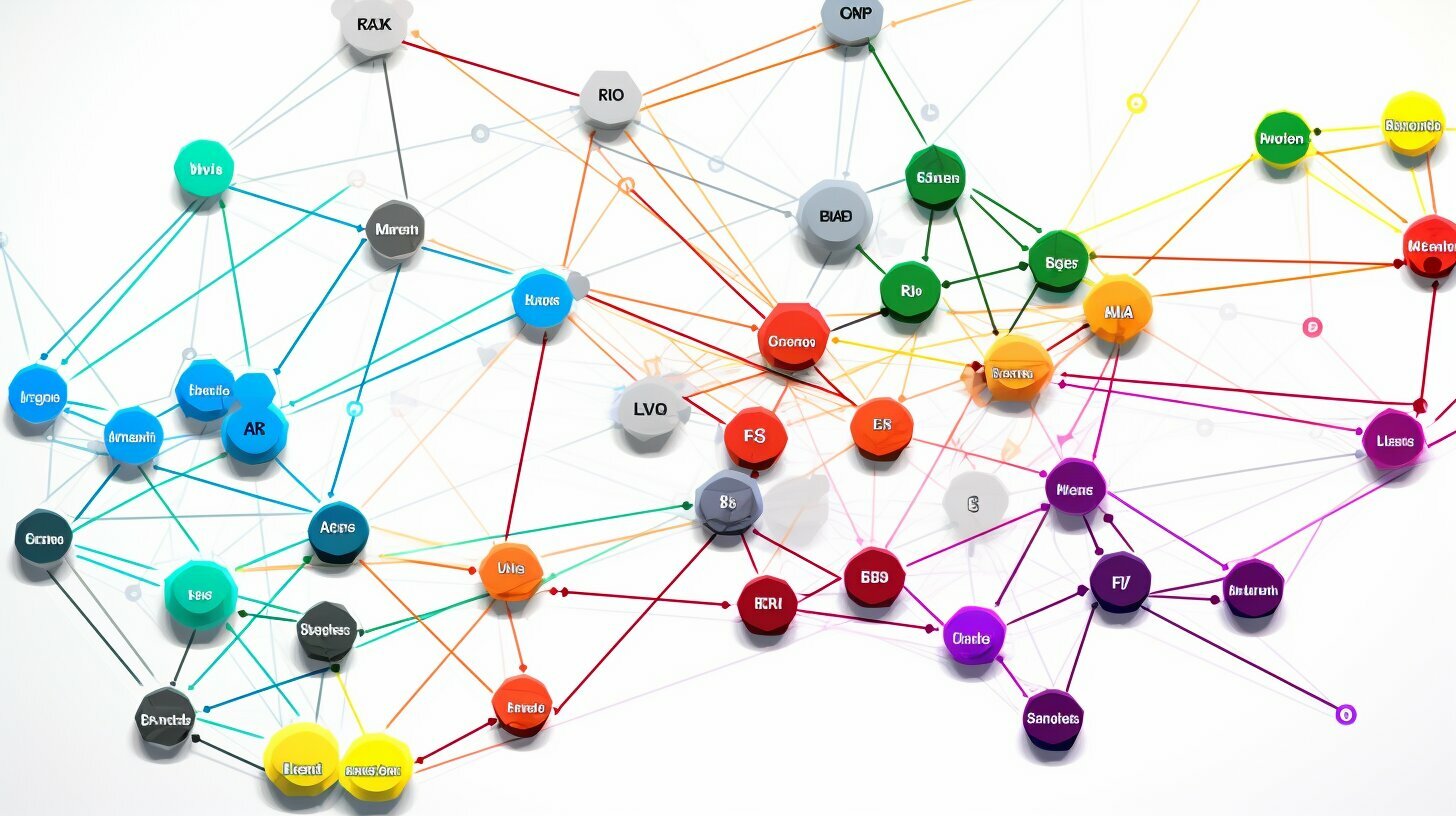Microservices architecture is a buzzword in the software development industry. It is an approach to software development that aims to break down an application into smaller, independently deployable services. These services communicate with each other through APIs, allowing for greater flexibility and scalability.
With the rise of cloud computing, microservices architecture has become more prevalent, providing businesses with a more efficient and agile way of developing and deploying software. In this article, we explore the fundamentals of microservices architecture, its benefits, and implementation considerations.
Key Takeaways:
- Microservices architecture breaks down applications into smaller, independently deployable services.
- Microservices communicate with each other through APIs, allowing for greater flexibility and scalability.
- The rise of cloud computing has made microservices architecture more prevalent in software development.
What are Microservices?
Microservices are a software architecture approach where a large application is broken down into smaller, independent services. Each service is responsible for handling a specific task or function in the application and communicates with other services using APIs.
This approach is different from monolithic architecture, where all the components of an application are tightly coupled and run on the same server.
The key principles behind microservices design include:
- Service independence: each service is developed, maintained, and deployed independently.
- Decentralized data management: each service has its own database or data store.
- Communication protocols: services communicate with each other using clear APIs.
- Containerization: each service is packaged as a container for easy scalability and deployment.
Benefits of Microservices
Microservices architecture offers numerous benefits over traditional monolithic architecture. These benefits include:
- Scalability: Microservices enable businesses to scale individual services independently, ensuring that resources are allocated only where they are needed. This allows for more efficient resource utilization and helps businesses avoid overprovisioning.
- Agility: With microservices, businesses can quickly develop, test, and deploy new services and features without disrupting the rest of the system. This enables businesses to remain agile in the face of changing customer needs and market conditions.
- Resilience: Microservices are designed to be fault-tolerant, meaning that they can continue to function even if some services fail. This ensures that the overall system remains operational even in the face of service disruptions.
- Improved Development Speed: The use of microservices allows development teams to work more efficiently, with each team focusing on a specific service. This specialization enables developers to become experts in their specific service, leading to faster development times.
- Flexibility: In monolithic architecture, changes to one part of the system can have wide-reaching effects on the entire system. With microservices, changes can be made to individual services without affecting the rest of the system, giving businesses greater flexibility in their development and deployment processes.
Architecture of Microservices
Microservices architecture is based on the principle of breaking down a large, monolithic application into smaller, independent services. These services communicate with each other via APIs, allowing for greater flexibility and scalability. The architectural components of microservices work together to provide a reliable and robust system.
Service Independence
One of the key principles of microservices architecture is service independence. Each microservice is designed to be autonomous, with its own data store and API. This allows for faster development and deployment, as changes can be made to one service without affecting others. Service independence also enables better fault tolerance, as a failure in one service does not impact the entire system.
Communication Protocols
Effective communication between microservices is crucial for the success of the architecture. Communication protocols such as REST, gRPC, and GraphQL are commonly used in microservices architecture to ensure efficient and reliable communication. These protocols enable services to exchange data in a standardized way, making it easier to integrate and scale the system.
Data Management
Microservices architecture places a strong emphasis on data management. Each microservice has its own data store, which can be a relational or NoSQL database. This allows for better data isolation and reduces the risk of data corruption. In addition, microservices can use event sourcing or CQRS patterns to manage data, providing greater flexibility and scalability.
Microservices vs Monolithic
Microservices architecture differs significantly from traditional monolithic architecture. The following table highlights the key differences between the two approaches:
| Microservices | Monolithic |
|---|---|
| Service-oriented | Function-oriented |
| Loosely coupled components | Tightly coupled components |
| Independently deployable services | Monolithic application is deployed as a whole |
| Each service has its own data storage | Single database shared across all components |
| Highly scalable | Limited scalability |
| Easy to update and maintain | Difficult to update and maintain |
Microservices architecture allows businesses to scale and maintain their software systems more effectively. By adopting this approach, businesses can break down their applications into loosely coupled components, each with its own specific function and data storage. This allows individual services to be independently deployed and updated, enabling faster development cycles and improving the overall maintainability of the system.
Monolithic architecture, on the other hand, relies on a single application that is tightly coupled and difficult to scale. Any updates or modifications to the system require a complete rebuild and redeployment, significantly slowing down the development process.
In summary, microservices architecture offers increased scalability, maintainability, and flexibility compared to the traditional monolithic approach, making it a preferred choice for businesses with complex software systems.
Microservices Design Patterns
Microservices architecture enables the development of complex applications by breaking them down into smaller, independent services. To ensure the stability and scalability of these services, it is crucial to follow established design patterns.
Service Discovery
Service discovery is a critical component of microservices architecture. It enables services to find and communicate with each other. There are multiple ways to implement service discovery, each with its own pros and cons. One popular way is to use a service registry, which keeps a list of available services and their network locations. Another approach is to use a sidecar proxy, which intercepts service requests and routes them to the appropriate destination.
Circuit Breaking
Circuit breaking is a pattern used to prevent cascading failures in microservices architecture. It involves monitoring the health of downstream services and breaking the circuit if it becomes unresponsive. Circuit breaking allows services to gracefully handle errors and recover quickly without affecting the entire system. It is particularly useful in environments with high network latency or unreliable services.
Event Sourcing
Event sourcing is a pattern used to capture and persist the state changes of a system as a sequence of events. This approach enables services to rebuild their state by replaying the events in chronological order. Event sourcing provides an audit trail of all state changes and enables temporal queries of the system. It is particularly useful in systems with complex business logic or regulatory requirements.
API Gateway
An API Gateway is a pattern used to provide a unified entry point for multiple services. It accepts requests from clients and routes them to the appropriate services based on predefined rules. An API Gateway provides a single point of control for security, rate limiting, and caching. It also simplifies the client code by abstracting the service complexities.
Containerization
Containerization is a critical aspect of microservices architecture as it enables services to be deployed and scaled independently. Containers provide a lightweight and portable runtime environment for services. They also enable isolation, versioning, and distribution of services. Container orchestration tools such as Kubernetes or Docker Swarm enable the management of containerized services at scale.
Using these design patterns, organizations can effectively build and operate microservices architecture to deliver scalable and reliable applications.
Microservices Examples
Many companies, both large and small, have successfully implemented microservices architecture. Here are some examples:
| Company | Industry | Benefits Achieved |
|---|---|---|
| Netflix | Entertainment | Improved scalability and resilience, faster development and deployment |
| Uber | Ride-sharing | Better fault isolation, increased agility, and faster time-to-market |
| Spotify | Music streaming | Increased developer autonomy, better scalability, and faster time-to-market |
| Amazon | Retail | Better fault tolerance, improved performance, and faster development |
These companies have shown that microservices architecture can bring significant benefits to businesses of all sizes and in various industries.
Microservices Implementation and Deployment
Implementing and deploying microservices architecture requires careful consideration of numerous factors such as technology choices, containerization, scalability, and monitoring. Here, we’ll explore some best practices for a successful microservices implementation.
Containerization
Containerizing microservices is essential to ensure scalability and flexibility. Docker is a popular choice for containerization due to its ease of use and compatibility with various platforms. With Docker, microservices can be deployed quickly and efficiently, and developers can easily manage dependencies and versioning.
Scalability
Scalability is crucial in microservices architecture, where individual services can be scaled independently to meet varying demands. Load balancing and auto-scaling technologies such as Kubernetes and Apache Mesos can help to manage the scaling of microservices. Monitoring tools like Prometheus and Grafana can provide real-time insights into the performance of microservices, allowing for proactive measures to maintain their availability.
Technology Choices
Choosing the right technology stack for microservices is essential for their successful implementation and deployment. There is a vast range of programming languages, frameworks, and tools available, and selecting the optimal combination can significantly affect the performance, scalability, and maintainability of microservices. Factors such as team expertise, service requirements, and third-party integrations should be considered when selecting the technology stack.
Monitoring
Monitoring is critical in microservices architecture to ensure the availability and responsiveness of individual services. Developers can use tools such as ELK stack, Datadog, and New Relic to track service performance, log data, and make informed decisions to resolve issues promptly.
Conclusion:
Implementing and deploying microservices architecture requires carefully planning and consideration of several factors such as containerization, scalability, technology choices, and monitoring. By following the best practices discussed in this section, developers can build and deploy reliable, resilient, and scalable microservices architectures.
Conclusion:
Microservices architecture has emerged as a game-changer in the software development industry, offering several benefits to businesses of all sizes. From improved agility to faster development and deployment processes, microservices have transformed the way organizations approach software development. By adopting a microservices architecture, businesses are better equipped to handle the ever-changing demands of their customers and achieve a higher level of scalability and resilience.
While the adoption of microservices can seem daunting, the benefits outweigh the challenges. Proper implementation and deployment of microservices can set businesses apart from their competitors by providing a better, more customizable user experience. As businesses continue to adapt to the changing landscape, implementing a microservices architecture will become increasingly valuable.







